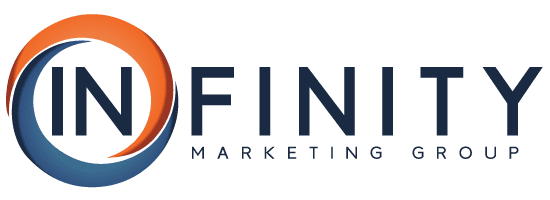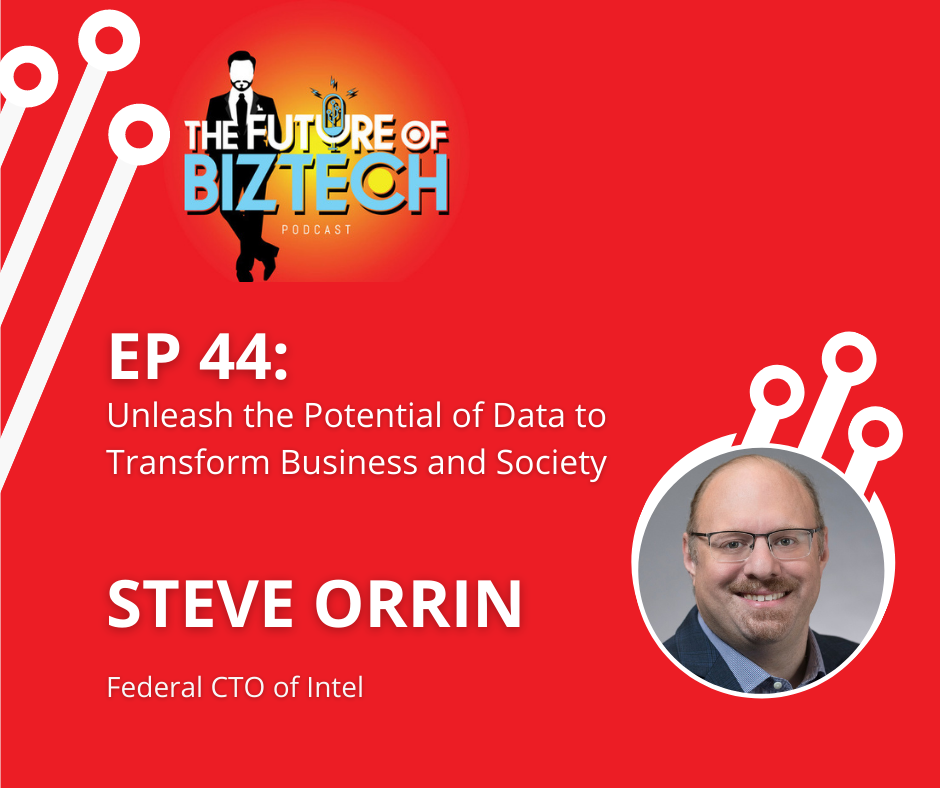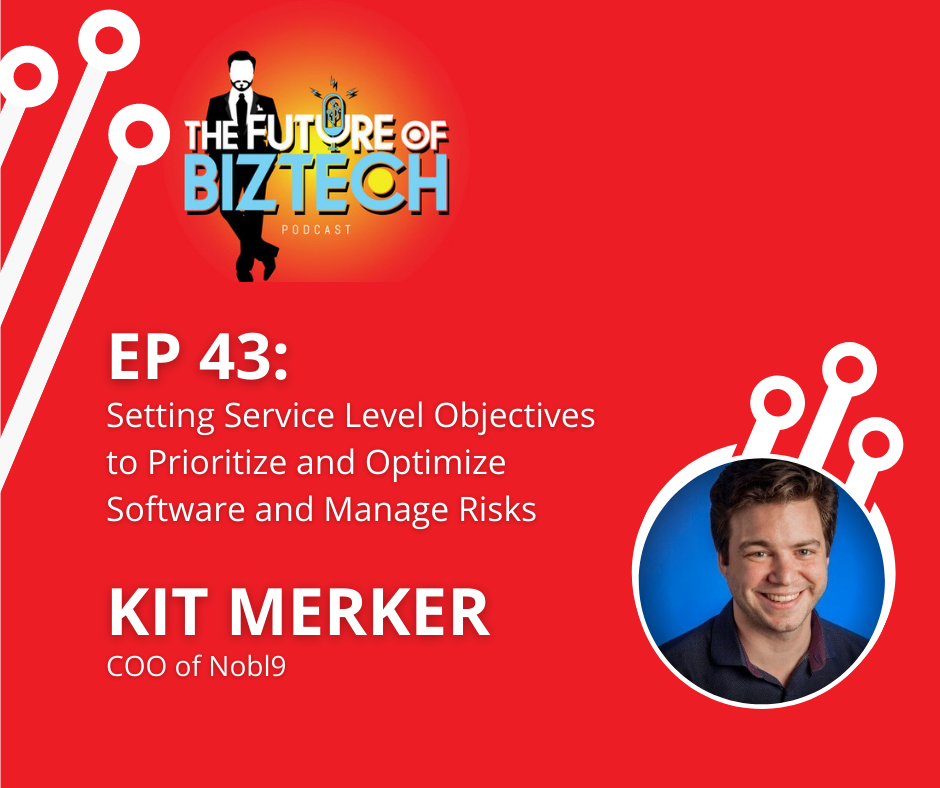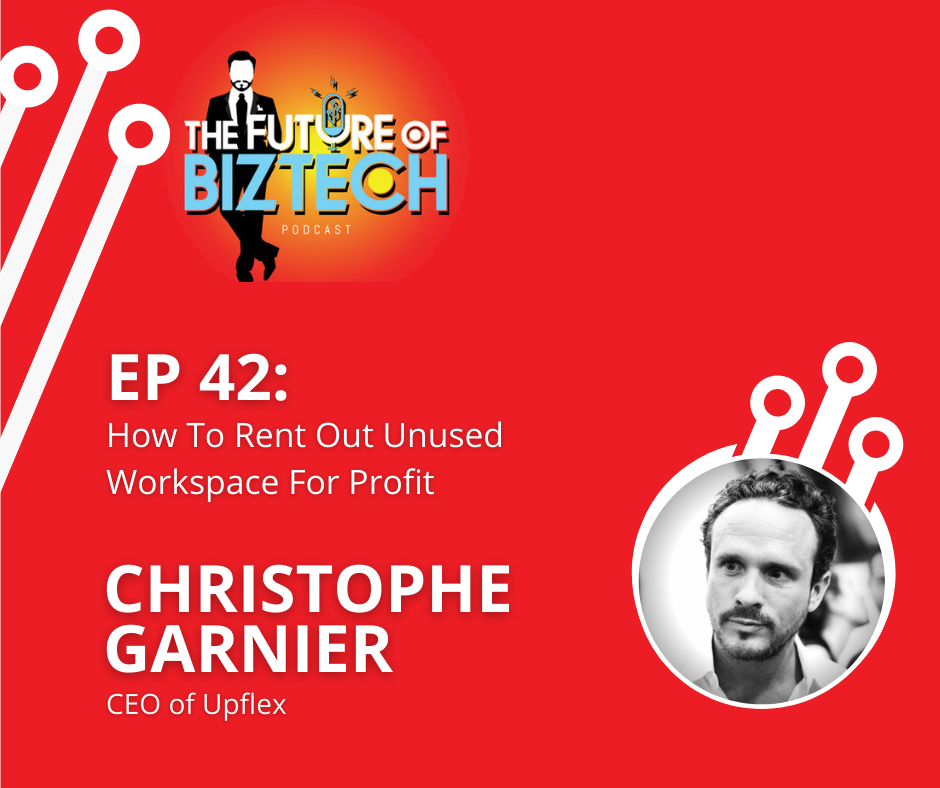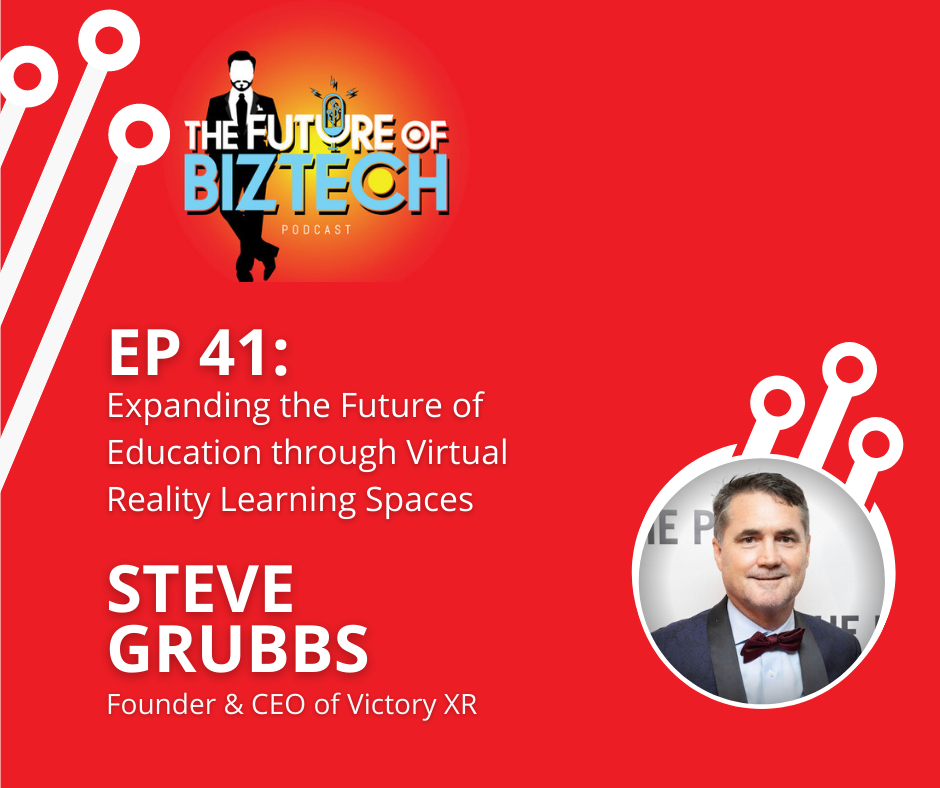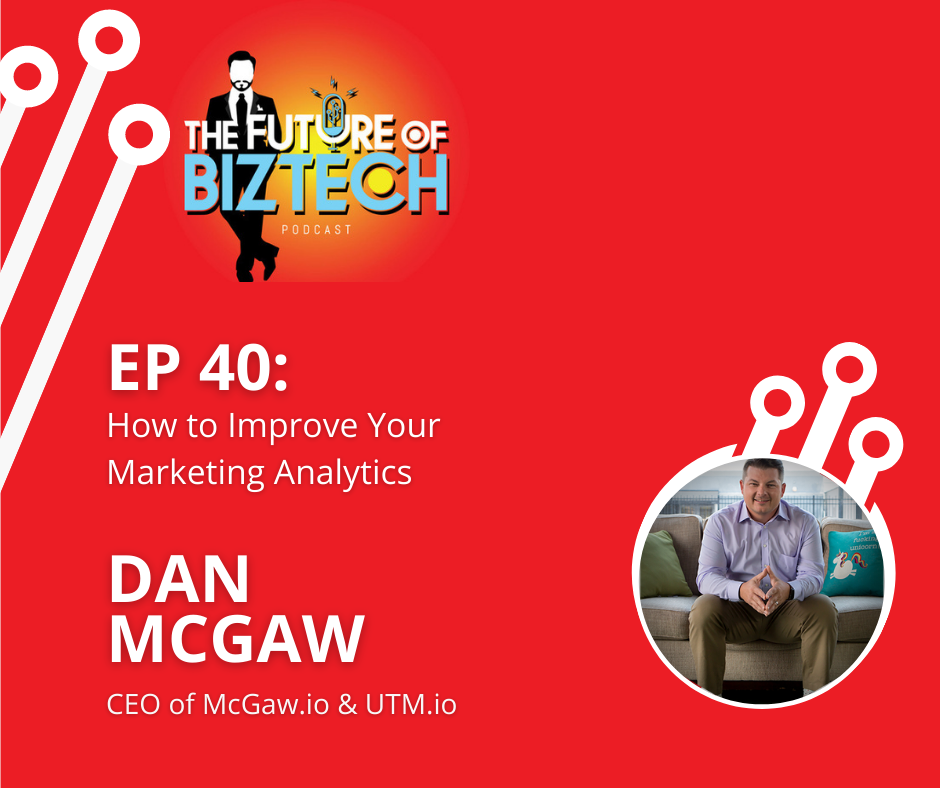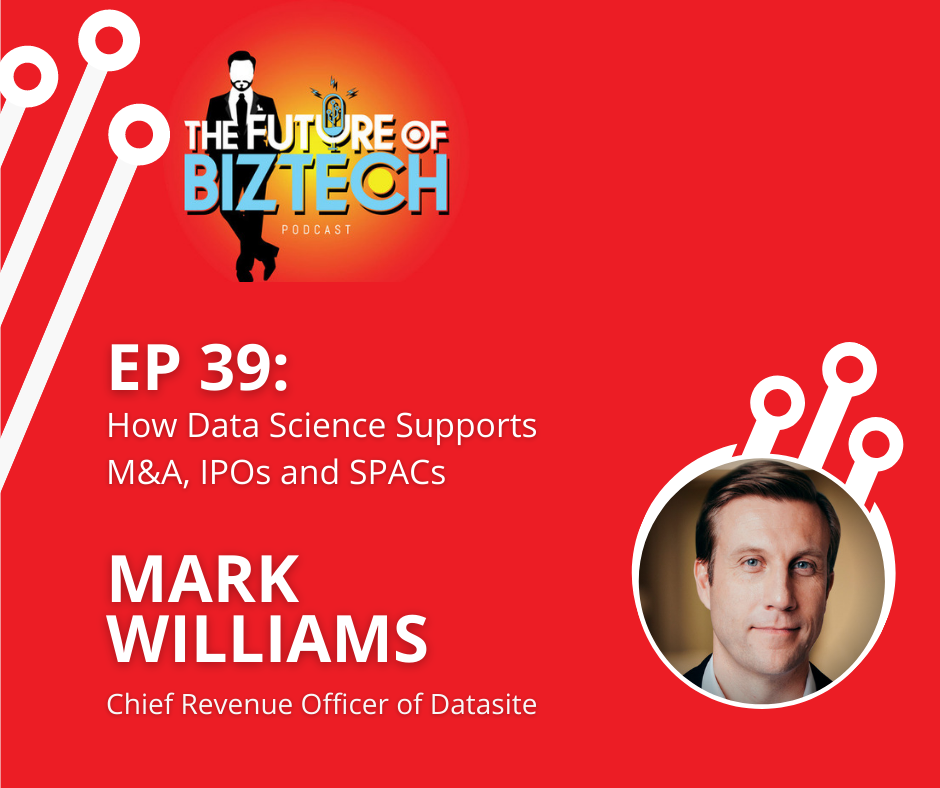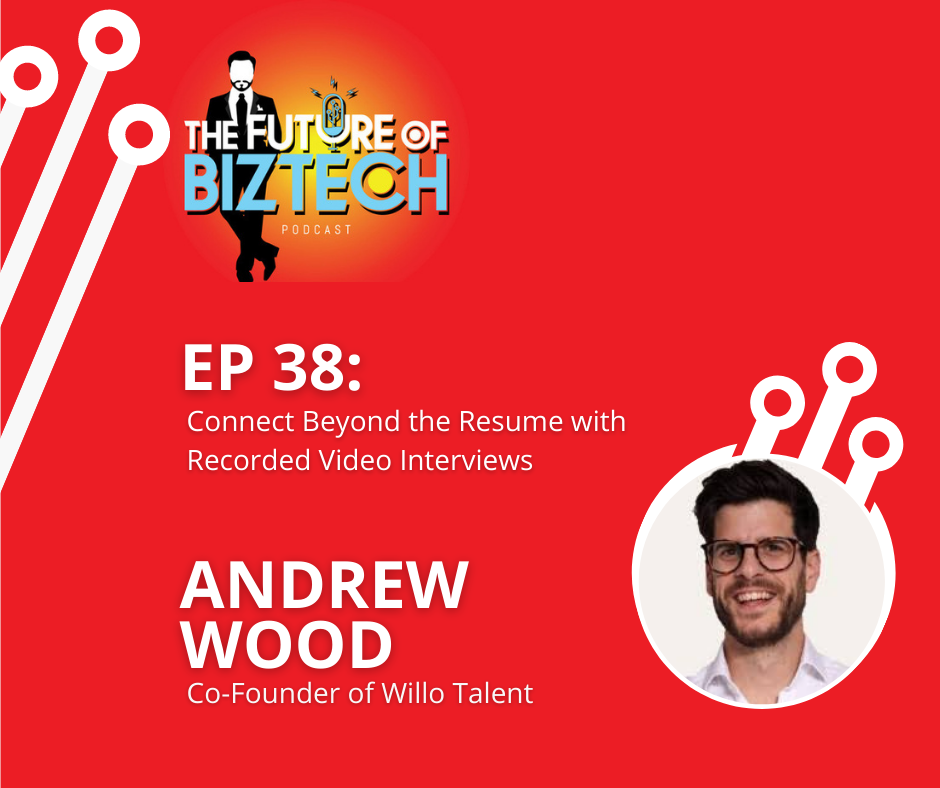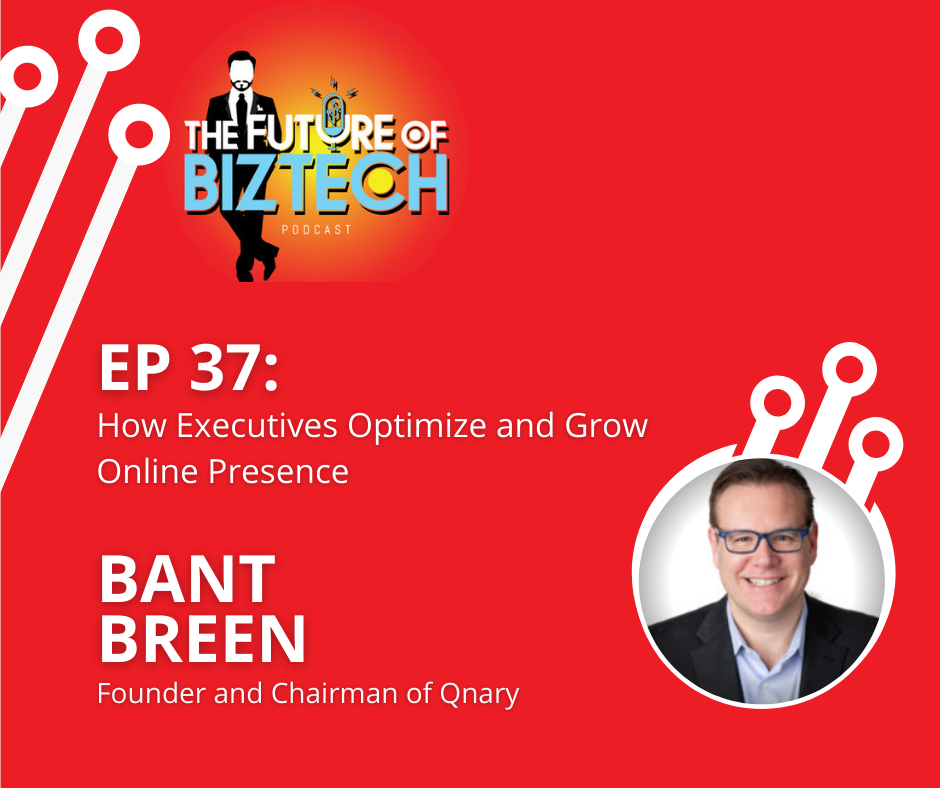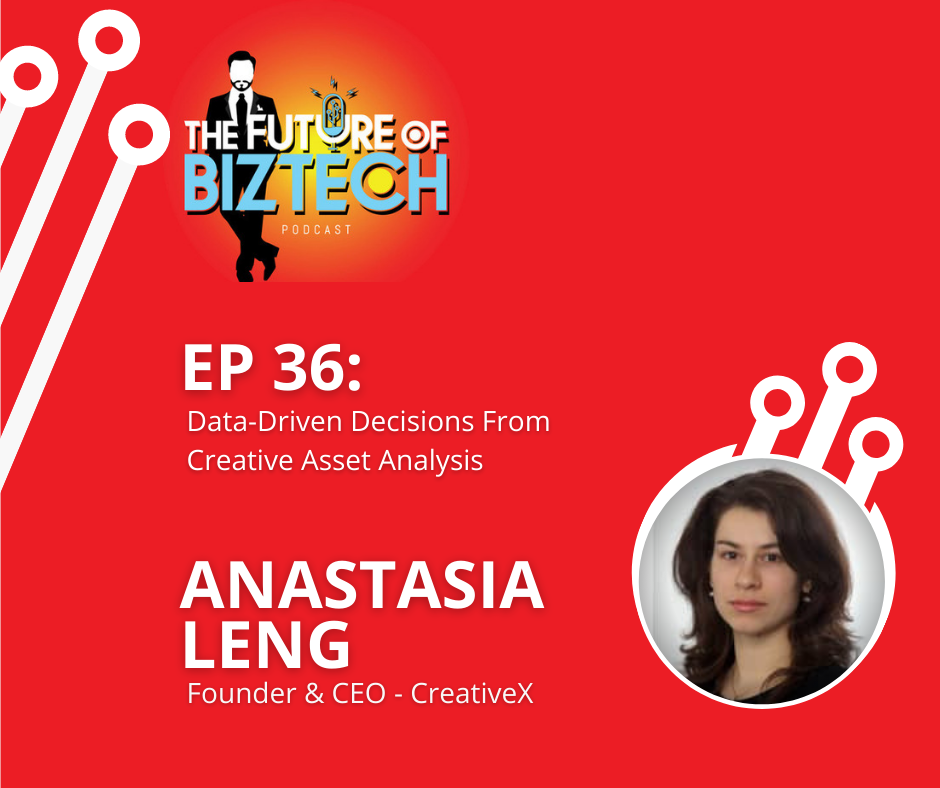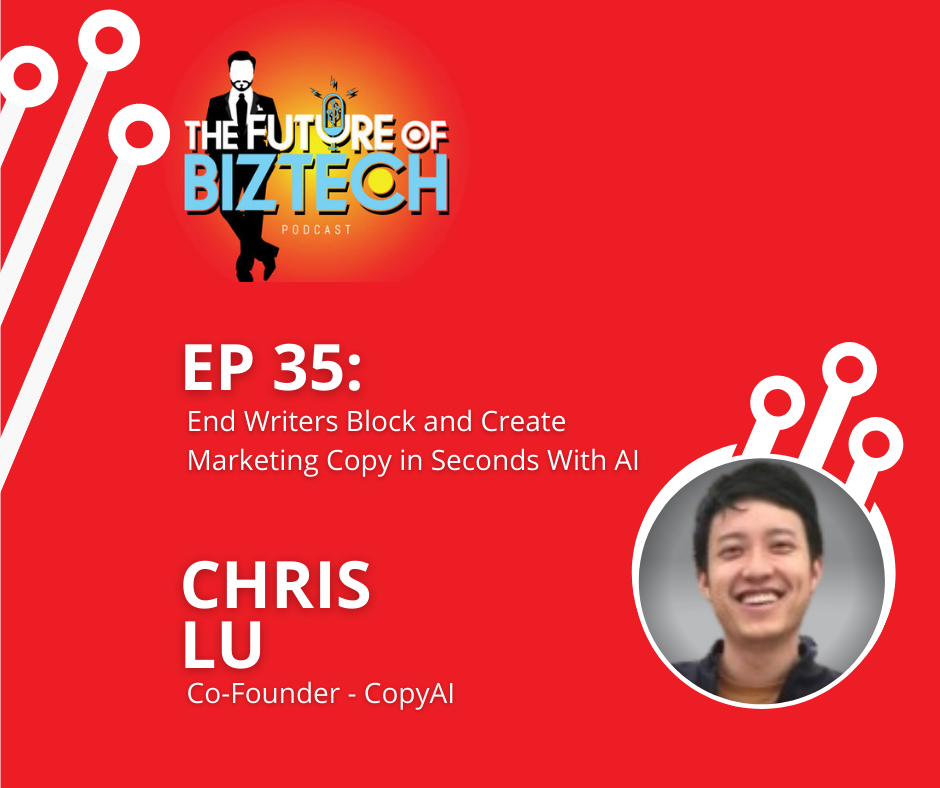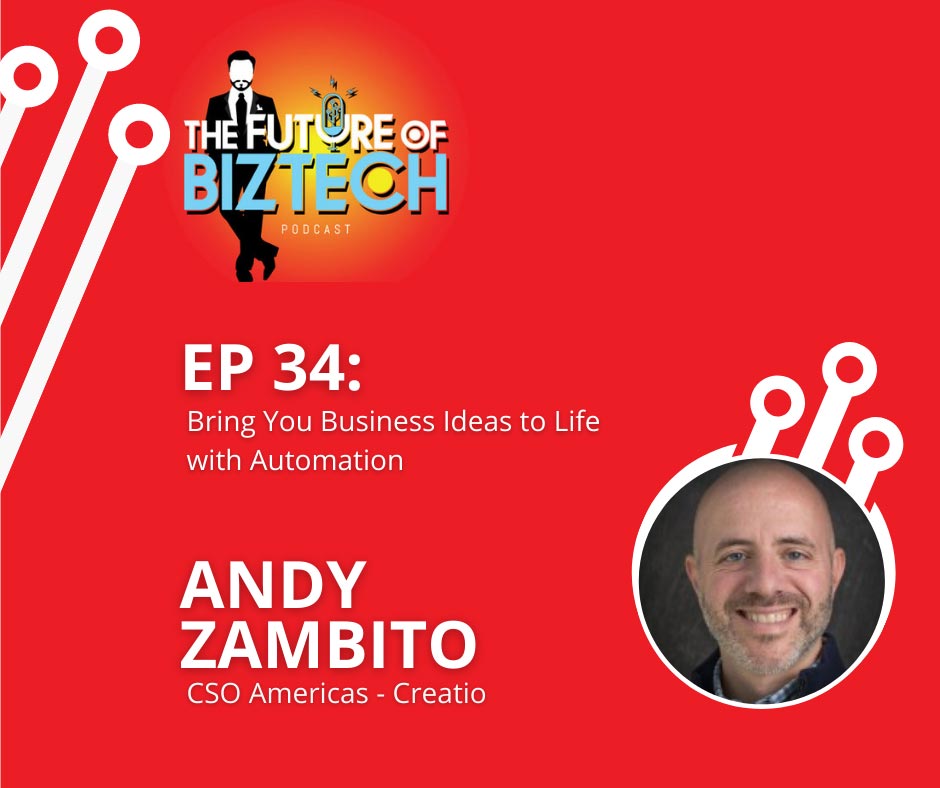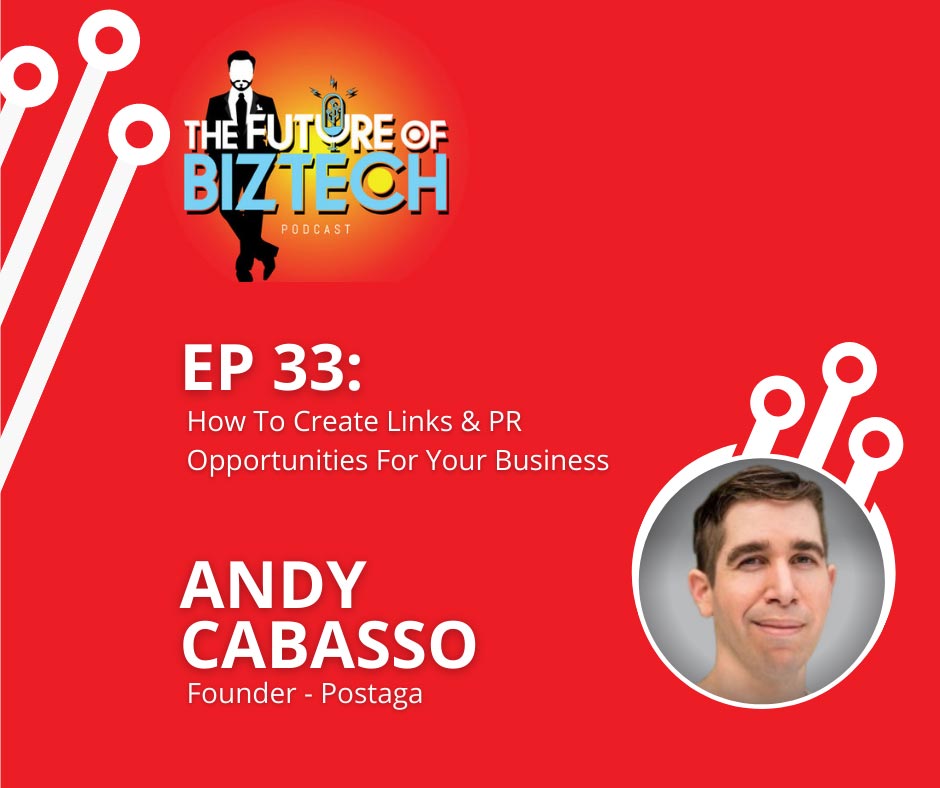Learn more about Intel at: www.intel.com
Find Steve Orrin on LinkedIn here: https://www.linkedin.com/in/sorrin/
JC: Welcome, everybody to another episode of TheFuture of BizTech. I’m your host, JC Granger. And I have another fantastic guest with us on the show. And if you end up loving this episode at the end, please show that love and appreciation, go and follow the podcast, wherever you’re listening right now give it a five star review, put some comments. And that really helps the algorithms of course, because that is how other techies like you and I find cool podcasts like this. And today I have the absolute pleasure of interviewing the federal CTO of Intel, Steve Orrin. Steve, thank you so much for coming on the show here. Tell the audience a little bit about yourself. And you know what it is that you do specifically at Intel.
Steve: Sure, thank you for having me today JC, I’m really, it’s a pleasure to be here. As federal CTO for Intel Corporation, it’s sort of my job to understand what the federal government needs from a solution technology architecture and roadmap perspective, what their use cases are, and help them to adopt the current technologies coming from Intel and from our ecosystem, as well as what’s coming down the road, what’s going to be in two to five years that they should start planning for today. It’s also part of my role to help solve some of those big problems. So when they’re looking at whether it be security at the edge, or being able to do enterprise transformation and digital monetization, how can Intel and its ecosystem help them achieve their big goals. And then the final piece, which I think is really the the fun part is translating all of those use cases. And those problem sets back into Intel, so that our engineers and our architects can build for those future use models and build technologies that keep our customers happy.
JC: Well, that’s really cool. And let’s talk about real quick here. You know, the first time I’ve heard this particular job title, federal CTO, right, so you talk about your work with the government. So how, I guess, is that structure of Intel? created where you’re over here in a C suite specifically for the government? Or do you do anything? Do you have anything else on your umbrella other than that?
Steve: So that’s a very good question, JC. The way to think about a federal CTO is, well, I am off in a specific division. It’s the federal division for Intel, where we focus on engagement with the federal customer and its ecosystem. So the integrators and the Federal divisions of other software and hardware companies, my charter is much broader. It’s really about understanding all that Intel does and providing value back to the mothership. And so as the CTO, I’m the Lead technologist for all government engagements, but it also means I’m the voice of the customer back into the organization. So just like you would have a cloud CTO, or you would have a memory CTO or client CTO, the Federal CTOs role is really to represent that entire market back into the business units and to help the business units to get reach into that customer base to and so that their technologies and their new innovations and incubation projects are on the radar of the various different government procurements for government programs. And of course, the larger the ecosystem that’s adopting technology for the federal government.
JC: Okay, and then so how does the government, via Intel work with like, maybe small businesses? Is there? Is there a path there? You know, how does that work? How do businesses fall into your umbrella when it comes up via the government? Or is it just straight with the government and they handle the rest?
Steve: So essentially, if you think about how the government procures things, or how the government buys or deploys technology, very rarely does the government go directly to a software developer and say, you know, give me your software. It happens. But oftentimes, there’s an integrator or a solution provider that pulls together the software packages in the systems and builds it on behalf of the government. And it could be large primes like Lockheed or Northrop or Raytheon that are building a lot of the weapon systems or building planes or boats, or you get the large contractors, the building IT systems, the lighthouses, the Booz Allen’s, the khakis that are building sort of the ERP systems for the VA or for the IRS. And so the the ecosystem that supports the federal government is is different and diverse. At the same time, when you pick up small business, it’s really interesting, the government has a special set of programs they call SBIR, so small business investments. And what it does is for many of the big contracts, they actually have language in the contract that an SBIR small business or minority on business, small business, needs to be as part of that program, or in some cases has to lead.
Steve: And so there’s an actual whole market of small companies that serve as the federal government that basically helps that small business, get into federal contracts, get those dollars, employed people at the small business side, and then can tap into the larger primes and tap into the larger ecosystems to help fulfill or to provide the technology. So you may find companies like Microsoft or Amazon or Intel or others that are partnering with a lot of small companies on these specific opportunities and contracts that have that carve out for small business or for minority or veteran owned small businesses. At the same time, one of the things that Intel provides because the reality is most people don’t buy things direct from Intel, you go to the OEMs you go to Dell, HP, Lenovo, or what have you to buy a laptop or a server or you’re getting services on Amazon, or an Azure or Google Cloud that runs on Intel, you don’t necessarily buy direct from Intel. And so our relationship with the federal government really comes down to being more of a neutral party, if you will. We’re not vested in which one of the OEMs or which cloud provider you purchase, or you go with. So we help them provide the right the right choices around the architectural approach. And we bring our large ecosystem, both the big players, as well as small, nimble rabbit companies that are doing innovative things with hardware technologies. And we can expose that ecosystem of small businesses and startups to large customers like the federal government, or financial services or healthcare organizations, because we want to really, we really want to show the best of what you can do, not necessarily just what the current server box can do today, we want to show what the advanced capabilities are. So we spend a lot of time and we have a very rich ecosystem of small and medium sized companies, startups, as well as well established ones that do interesting integrations, build unique and pretty awesome software, especially if you think about today in the areas of like AI, and 5G, and cloud services and micro services. There are a lot of amazing little companies; and we then highlight those and bring them along as part of our ecosystem.
JC: Well, I mean, like it says an Intel inside of everything. Right, so but let’s talk about that here, too. So, you know, obviously in the news here lately, we keep hearing about chip shortages. Right? So helped me understand, you know, what is contributing right now to the chip shortage, and what industries other than tech, for example, is affecting the most right now?
Steve: So you bring up a good question. And this, let’s just say, face it, the semiconductor supply chain is very complex. But if we get to the heart of it, and it’s really not a particular, you know, like high end chips that are really the key shortage right now, whether it be Intel, or other modern state of the art technologies, there are actually lots of supply available today to meet the demand. The challenge, oftentimes, and you hear about it all the time with like the automotive industry, or appliances industries, it’s not the state of the art chips that are actually the ones that are constrictive right now in the supply. These are the really cheap low end chips, the legacy chips, or what they call the legacy process nodes that do things simple things like power regulation, voltage, regulation, do network switching. So these these micro processors that are still absolutely crucial. If you think about every laptop, you plug a power cord into, there’s a little chip behind that, that regulates the voltage and controls the power distribution across the board. Those are the chips as for example, that are in short supply, and that are almost exclusively made overseas. And without that chip, you can’t build the laptop, you can have all the state of our processors. But if you can’t, if you don’t have the cheaper chips, if you will, the lower end chips, that’s the ones that we’re seeing affect a lot of the spy chain. The automotive industry is a very good example. They chose as an industry to stay on certain legacy chips because they serve their needs. They didn’t need the higher end chips to control their voltage regulation across the alternators.
Steve: So they stayed with a legacy chip that was easily available and very cost effective. And those were the chips that were hit most hard by the Spicers. Now it’s across the board, I’m picking on the power regulators. There are multiple chips in this class of low end, cheap chips that are currently supply constrained, it’s getting better in two levels. Number one, we’re starting to see visibility into the supply chains, they’re starting to tick up. It’s still a long lead time. But I think what you’ve seen in the news in the media and coming out of the federal government around things like the chips act, and other executive orders is focusing how do we deal with this supply chain issue at a global scale, we need to pick up production locally. And that means investing locally investing in small and medium and large companies. And it really has to go across the board, large companies like Intel and others as well as small manufacturers that are building the components, those little cheap chips, or the substrates, which is the platform that you put the chip on too, and making sure that those are built domestically. Same thing we’re seeing happen in Europe, Europe is also looking at how do they help with the global supply chain issues, to bring manufacturing back to the Western Hemisphere and also to be able to have diversity so that you have availability in the US, in Europe and in Asia, so that wherever you need the chips, you can get them that by having sort of critical path or single points of failure. I think COVID pandemic really illustrated that our global supply chain can be very fragile. And so we’re seeing a renewed investment here.
JC: Yeah, it was a hell of a stress test. Right? I mean, I think we I think we found a choke point?
Steve: Right, indeed.
JC: So what’s Intel doing about that? Are you guys building, manufacturing plants in the US or in Europe so that you can solve your own problem and you know what that shortage?
Steve: So our new CEO who came in in February, Pat Gelsinger has really taken this under his is better has made it a key strategy for Intel. He’s called it IDM 2.0. And they’re sort of multiple parts to the strategy. Part of it is investing in locally and being able to have increased production in the US and in Europe. And to that end, we’ve already stuck around on new fabs in Arizona, as well as there’s work going on in Europe as well in other places to be able to increase our production. But that’s only part of the conversation. The other part around IDM 2.0, which is a big shift for Intel, is it’s not just about building like I said, it’s not building only Intel chips, we actually have really good supply, it’s about how do we help the broader ecosystem? How does Nvidia and Microsoft and Apple and others get access to be able to build their chips on our foundries and in our fabs, and that’s the big shift. So it’s not just about building more capacity for us, it’s building that capacity to be able to support the ecosystem, and the OEMs. And the other end, and nowadays, even companies like Facebook, and Microsoft and Amazon have for certain parts of their workloads, their own custom chips, their own ASICs, accelerators, and giving them the ability to build those domestically is going to help them to meet the future short supply chain issues of tomorrow. So the good news is, there’s an answer, and it’s being worked on. But the thing to remember with anything in the semiconductor industry, this is not, it’s not like software, you can bring out a new piece of code in six months.
JC: Yeah. Well, let me ask you this. I mean, you know, I’ve always wondered this about Intel specifically, you guys are so good at playing nice with others. Right? Like, like, you’re like, you’re like that that kid in high school who could hang with any of the cliques, right? And I got, I have to ask you, how have you guys managed to not only work with so many other big tech companies, but how have you guys avoided all the you know, political stuff, and the scandals and everything like I mean, just if I feel like every day, we turn on the TV, and there’s another tech company that’s getting just chewed out by the media or by other tech companies. And it’s like, and here’s Intel over here, like Switzerland, just super neutral. likes everybody. No one has a problem with them. You know, even the supply chain shortage of chips. Nobody was blaming Intel. It’s amazing. If there was one time that you guys were not going to get away with this, this would have been and nobody is going, “How dare Intel not have figured this out before?” Like, how would you guys stayed so clean? And then how do you guys work so well, with others? I guess is my point.
Steve: So I think it comes to two, three things, I’ll give you three answers. One, it’s a bottoms up and the tops down, having good leadership that sort of drives that we need to be the enabler of technology. Whether that technology is in, you know, our OEM channel, our cloud channel, even, you know, even with our competitors, or coopetition, as they like to say, it still needs to run on Intel, they may be using their own accelerator that are using our GPU, they’re using their GPU, but you still need an operating environment, you need to still need a CPU to drive the server to drive the client. And so understanding our role there about how we enable the entire industry, and it comes down to the like I mentioned the bottoms up we have really good engineers, I think one of the things I’ve been with Intel 16 years, and there are people at Intel that have been here for you know, there’s someone I know who’s retiring after 32 years at Intel, he spent his entire career. We have lifers here. And it’s not because they have nowhere else to go. I mean, the industry is you know, that the talent has been pulled left and right, is that we are enabled by engineers, for engineers. So the engineers are driving technology. And so you don’t get a lot of those politics when you’re trying to solve big problems. They give you a really good example, when I came to Intel, I came from the startup world, I had done multiple successful startups in the security space, one of them got acquired by Intel. And when I thought about, well, what should I do now that I’ve been acquired, I’m gonna go find my next startup. My most successful company, we had 500 of the Fortune 1000, using our product, which is a huge success for a startup. I mean, that’s half fortune 1000, they were using our product, it was great. The first technology I worked on it, Intel went to 40 million PCs. And so the impact you can have, is that much bigger. And so when you’re an architect, or an engineer, or a program manager, working on a product that’s going to change the way people compute, that sense of pride and a sense of accomplishment, you really can’t find another place. And so we understand our role and take it very seriously.
JC: You guys have just seen bulletproof man, I mean, you don’t, you’re not even coming up when they’re talking about, you know, hacks, right, you know, and you know, like information being hacked. And, you know, no one’s saying, oh, yeah, well, we found a way to exploit the Intel chip. And that’s how, like, like, well, you just are bulletproof in this. And I just find that fascinating to be completely honest.
Steve: Well, I mean, let’s face it there, there have been some published vulnerabilities in some of the firmware, some of the hardware, it happens every no one is immune from that. I think what makes it a little bit different is how we handle it. So we’ve been very advanced in our proactive nature of working with external researchers, so that when a bug is found, or when a vulnerability in our systems are found, we’re proactive. We’re already working with those researchers so that we’re taking in their input and working on those fixes, and working with them so that the industry can get updated, fixed. We’re not hiding things like some other companies are trying to make a big deal about it. We’re just our goal is that if something is found, we want to make sure that all of the OEMs can find, fix their products in time, so that there isn’t a vulnerability for the end customer. And so working together with the ecosystem and the researchers is something that was built into our DNA from a very early stage.
JC: That’s very cool. You know, I’m a Bay Area boy, myself, my dad worked for Sun Microsystems, like 20 years, you know, I was, was running cord between walls because I was small and I can still remember the, I can still hear the hum of the server rooms, right? So like, this stuff fascinates me. I love this and I think you guys are great. I have a question. So let’s talk about the future, right? This is The Future of Biz Tech podcast. Let’s have a future question. So where do you see and we talked a little bit on this earlier regarding, you know, building supply chains locally, right, like nationally, here or in Europe so that we don’t have this issue of that again. But where do you see your industry going? Or even you know, in the next 5-10 years, whether it be through technology or legislation, you work with the federal government, obviously, so that there’s a lot that happens with that, you know, where do you see Intel, and that next five to 10 years, and the industry as a whole?
Steve: So I think one of the big things that’s happening right now, and it’s subtle, that everyone hears about the buzzwords, AI, 5G, those big technologies, but there’s a reason why those are happening. And it’s really about the proliferation of the edge. What is edge computing, you know, we used to call it just IoT, but IoT was too narrow, because it’s, you know, you think about, oh, it’s my spotlight, or it’s a camera. Edge computing, it’s really about the diversity of devices and things out there in the world that are both connected, and creating or syncing data. And then trend processing and transport. When you think about a car, the stoplight, the smart city infrastructure, the cloud, all working together, where you’ve got distributed processing, so everything is doing some process, everything is sensing and collecting. Your phone is an amazing sensor platform, your car is a driving data center, a plane is a flying data center. So you have all this data to be collected, that’s got to be processed, got to be transported, and results and actions have to be taken. That’s why 5G and AI are really that the forefront of what’s driving this next five years of evolution is because we need AI to make sense of all of this data that’s coming at us at real time. And we need 5G to be able to have that data move between systems and to the cloud and back again, and be able to do it efficiently..
JC: With fast enough speed right like..
Steve: Exactly
JC: Real time basically..
Steve: Real time and high definition. And so that’s why 5G and AI are so important is because they are these if you think the fuel that’s going to drive this next generation of compute, and when you see the trends, people talk about the cloud is, the cloud is this thing in the sky, and everything is going to go to the cloud. Under the covers when people have recognized now it’s that it’s not just in the cloud up there at Amazon in Seattle, or in their different regions, the cloud has been extended all the way out to the edge. And so whether it be things like Amazon outpost, or Azure Stack as examples of this, of them taking their cloud capability, and dropping it in racks that then can be deployed at an enterprise, or deployed in the field. So you think about energy distribution, you know, inside there, there’s a rack of servers that every one of those energy stations that’s processing, sensing data about the flow of energy, it’s a mini data center, it’s an extension of the cloud. And that data, of course has to be analyzed in real time so you can respond. So those, those transformations are the key drivers of innovation. So we look at what are the next five years, we’re gonna see continued acceleration for what AI can do, and the places that will touch us. In some respects, that’s already happened, we just don’t realize it, yet everything that you do on your phone, on the web, in your business operations are affected by machine learning and AI, you know, when you make decisions about what where to purchase your products, or how to build your systems, or how to get better efficiencies, into your development processes, all that is informed by machine learning, because the products you use are leveraging them, that’s going to continue to accelerate. The other thing that we’re seeing is as Moore’s law continues to climb, as we see more and more computing being able to be done at a lower cost and lower power, we start to hit a point where we’re going to see transformation in the kind of activities we can do. So we’re seeing people talking about quantum computers, they’re probably still good 10 years away before we have functional, you know, commercial quantum capabilities. But before we get there, we’re going to have exascale capabilities in the next year where we have supercomputers that now can perform functions in days or if not hours, that used to take weeks, if not months, if not years.
JC: That’s kind of always how the technology goes, right? I mean, we talked about how there used to be, I took a whole room to hold one computer and now we have 100 times the capacity in our phone than that, you know.
Steve: Exactly, exactly. And so when you start thinking about that kind of scale, it applies to everything if you’re designing the next generation car, and you have to do sort of the you know, the temperature models, the flow models, you know, the risks on how it will handle in a crash. You can do those designs much faster now. And so what maybe took you weeks can take you minutes and you can make design changes in real time. That means that whole innovation cycle speeds up and so now cars can get designed to build and customize more quickly. That changes the business model. So now the Auto industry starts thinking about what can we do custom car to make or on demand delivery, like the PC industry does. And so now you have transformation in business that are enabled by technology. So technology is not going to change your business directly. It’s an enabler. But now that you have that at your disposal, that business can now operate like technology does. And so you start getting transformation of industries, whether it be, you know, classic brick and mortar, industrial, oil and gas, automotive, or, you know, b2b software and ERP systems changing now, in the past, you had to go buy a big software to do your ERP. And then maybe you brought something onsite, and now you can do some of it in the cloud. But with micro services, and distributed multi cloud strategies, you can basically distribute your ERP across all the best service providers out there and get exactly what you need. And what that means is A. it reduces the cost and overhead of the maintenance of the actual system, but also means you can innovate your business without having to change the way you do ERP, if you want to be able to go try some new business model, or new revenue stream or new licensing approach, you can get a micro service that will enable that into your systems without having to re engineer the whole thing. That means you can have the ability to be agile in your business structure, again, changing the way businesses do business.
JC: Yeah, and that gives us such an exponential curve up too. And that’s I think that’s something that people maybe don’t even understand or appreciate sometimes, is that once some of these things you’re talking about, like with the AI mixed in with 5G, just speed plus, you know, intelligence, when you combine those, people forget that that’s a hockey stick move right there. Right, that’s going straight up. And, you know, it could be unrecognizable, you know, in 5-10 years, right from where we’re at today, for example, and then and then we look back, you know, and becomes kind of like that, uh, that Amazon idea like, you know, you know, next day or two days shipping, you know, we’re so used to that now. And one day, it’d be like one hour shipping. Like, how did you get that? We get really entitled about it too, you know? So let’s talk about what’s coming up for Intel, my audience loves the inside scoop. And you guys are, you know, such a big and well known company, it can be within within your division, or just in general, what is something that people maybe don’t know about just yet that Intel is going to be releasing? Or showcasing or advancing here pretty soon, what do you give, give us something give us give us a little, little bit.
Steve: I’ll give you a little bit. So recently, we showed off at the Intel innovation conference, which just happened a couple of weeks ago, some amazing new technologies that are coming to market. One is our latest generation of client platform. It is unbelievable the amount of power and computing that we’ve been able to pack into the system into the what’s called the alder Lake platform. The other key thing, the thing that’s exciting for me is all the security features that are now built in out of the box inside the Intel platforms. And it goes across all areas of security from being able to make sure the system is intact. So when you boot the system, you know, it’s all good, and nothing has gotten inserted on it, to protecting your data. In light of the threats that we deal with. If you think about right now, we always hear about ransomware and data breaches and all these different problems are happening on a constant barrage. Part of the problem is the data itself is not being protected wherever it lives on the PC in the cloud, in the data center. And by having technologies built into the clients and the servers and the network stack where Intel lives in all of those places, that can protect the data end to end and I think that’s the big game changer is, when you can protect your data end to end. That’s the game changer. And that’s what Intel’s building into our technology, into our CPUs available now. And then the last thing that I think is really interesting is we’ve also taken a look at those vulnerabilities. So software vulnerabilities have been a bane for 30 plus years, every time you turn it on, there’s another operating system attack an application attack. So what Intel has done to start looking at ways where you can use the hardware to either detect or to close those vulnerabilities. And so two technologies we announced just now, one is around closing a class of vulnerabilities in software called return oriented programming, and being able to basically use the hardware to block it. And so if your application or operating system is taking advantage of that hardware feature, those attacks no longer work. And so it’s like eliminating entire class of vulnerability just by running on the latest hardware. And for me, that’s very exciting means we can affect the day to day lives of everybody.
JC: Now, that’s huge. I mean, that’s absolutely you hear about ransomware and stuff and happening even just to individual people, you know, they sit there, they lock up their computer and you got to you know, give them bitcoins or they can unload it something from a consumer standpoint, I think that’s fantastic. And I can’t even imagine how big it’s gonna be on the federal side for the government side, which you know, you’re where you mostly operate. So I think that’s really cool. I’m glad about that and thank you for telling us that I think it’s really cool. That’s coming out what the keep an eye on that. I’m going to switch gears here for a second though. I want to just ask a personal question, right?
Steve: Sure.
JC: It sounds like the cliché personal question. What did you want to do when you grew up? When you were a kid, right? Like, what was your dream? And then how did you get to where you’re at now? And are those the same thing? Like, did you say I want to, you know, be high up at a big software company or hardware company, you know, tech. So like, what did you want to do when you’re a kid? And then how did that transition?
Steve: It’s a very good question. And it’s a fascinating story. So when I was younger, I had two loves — computers and really hacking, and the other was biology. And so as, as I was, you know, so sciences in business, for me, it’s about solving problems, whether it be figuring how things work and hacking things, or understanding biological processes. It’s really about how do you solve problems? How do you answer those hard questions that’s always fascinated me about the time I need to sort of figure out what I wanted to be when I grew up and go to college and actually have a career. Computer Science wasn’t really a exciting option at the time in the late 80s. And so I went the bio route and actually did a research biology degree, I did graduate research and biochemistry, and I was going to become an MD PhD, and I work in a lab for the rest of my life. That was my career, I was going to publish papers and, and do really cool science. And right before I was gonna start med school, I had sort of a period of time where my grant with the government, you know, government grant had run out for some research I was doing. And so at some time before I was gonna start med school, and a friend of a friend had some money wanted to do a startup. Now remember, this is 19, early 1995, pre Netscape IPO, early days of the internet. And so he said, Hey, you know, you want to help me, you know, this hacking stuff, can you help me with this idea. And so I said, You know what, this would be a good idea to save some money for med school. Well, three months into doing it, I fell in love. And this was, again, the exciting early days of the Internet, did my first startup in 95, grew that startup, and then in 98, decided to go do my own, and started my own company and did that one, and then just it’s serial entrepreneur, through the 90s. And into the mid, the mid 2000s. And loved every minute of it really got the opportunity to work with some of the luminaries in the security field. My mentor, Bruce Schneier, and others have taught me the keys to understanding cryptography and understanding applied security early enough in my career, where I’ve now been able to pass that along to people I mentor. And then doing the smart thing, that’s what I, that’s where I went, I was like, I’m going to be a smart guy, I’m going to start companies in the security space and solve hard problems. And then he got acquired by Intel, in 2005. And like I said, earlier, I was going to go off and do another startup after six months. And they gave me the opportunity to run security pathfinding, which in Intel, what that meant is looking at the two to five year horizon, what are things we could do with our hardware as it exists today, or it’s coming, that would be innovative for security. And so for eight and a half years, I ran some of the advanced research around software usages of security. So things like anti malware, antivirus technologies, leveraging hardware, web and cloud security, virtualization security, fascinating stuff, that again, as we built these features, they affected the entire industry. And so I did want to become a doctor at one point. But I went, you know, stage left and became a technologist and really got to use my hacking skills and my security background, you know, and the things that I did in the 80s have served me well throughout my career.
JC: That’s awesome. I would like to ask that question because just hearing that journey, and it’s always a different path, right? And it’s almost never like what someone wanted to do, like when they’re a kid, right? And so I think the best part is like, okay, well, how did it get there? How did it work its way to where you’re at now. Alright, so last question for you, you know, you’re a tech guy, I’m sure you do a lot of research and reading, if you could give one recommendation to the audience of maybe like the best book, right? Whether it be audio book, or regular, you know, and you can pick your your theme of if it’s tech or not, but what’s kind of a must read in your world?
Steve: It’s interesting, there are two books that I go back to, and one is not a technology book. But it is a book that has really taught me so much about how to run businesses, how to run teams, and how to work within an organization. And that’s Good to Great by Jim Collins, one of my early CEOs that I worked with, in my startup days had recommended I read the book, and she you know, and he, she was friends with him. And so he came in to talk to us, and just had such an impact. But that book, it really was understanding the dynamics of what makes businesses work and what what your job there is to do. Whether it be surrounding yourself with people smarter than yourself, or understanding the core of what your business really is, has advised me to throw out all my technology as well, he talks about it from a business sense, it applies equally to the technology sense. So that’s one that I live and die by a night still still go back and look at it. And as far as the technology books, there are so many right now. But the the one that I read first, and that I still point to is sort of the one that got me started was Applied Cryptography by Bruce Schneier by my mentor, they sometimes referred to as the big red book is about yay thick. But one of the key things and he’s had multiple books that have followed that have all been great, but the key thing is, is that it’s not about the math. A lot of times engineers say I’m going to build the perfect crypto algorithm. I’m going to build the perfect compiler. And really what it comes down to it’s about the application of that technology. That’s why it’s called plied secure so how do you apply cool technology to a problem? And that’s I mean, that’s the theme that sort of writes throughout the book. And throughout his talks. It’s not about the just the math, it’s not just about the code. It’s how do you solve a problem? How do you solve a customer’s problem, or a business from or your own internal development problems? Using technology, it’s not about the technology as the end but technology as a means. And I think that’s the key thing that I learned that you learn from that. And Applied Cryptography is really about how do you apply cryptography to email to network protocols? And that’s really the lesson learned there.
JC: Yeah, I really like the application part of it. Because you know, I’m more of a practical type of person. That’s how my brain works. I’m like, Okay, well, that’s great. But how do I use it? These guys like, how is this gonna make my life better? Right? So how can it listen, by the way, Steve, thank you so much for being on the show here. But how can people reach you, normally, I would say, how do they find the company website? Well, it’s Intel, we get that we know where to find Intel, okay. But if anyone listening is on that more higher level, and they feel like reaching out to you for like a really big enterprise style conversation, how can they contact you?
Steve: So the best way to get a hold of me honestly, is through LinkedIn. And so it’s S-O-R-R-I-N, on LinkedIn. So linkedin.com/in/sorrin/ is the best way to get hold me just reach out with a connection request. And I’ll accept and that’s the best way to get the process started. And this way, you don’t get stuck in a spam filter. So it’s, that is the best way to get a hold of me. And again, it also is where I publish, you know, so when I’m doing conversations, when I’m putting out articles, that’s where you can see the greatest, you know, the latest of what I’m talking about these days.
JC: That’s awesome. And listening for everybody here listening out there. Again, if you liked what you heard today, be sure to subscribe to the podcast, give it a five star rating, put some cool comments in there. So other techies like us can find it and enjoy learning about all the cool, amazing b2b software and tech like Intel here on the market today. Steve, again, thank you so much for being on the show. And I really look forward to publishing this and I think I have to call my dad and be like, Hey, I just talked to Intel today.
Steve: Thank you, JC. It was a pleasure being here today.
JC: Have a good one.
